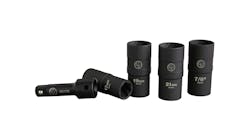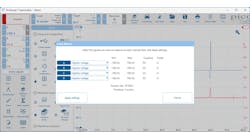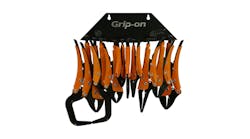In the never-ending pursuit to improve fuel economy, automotive engineers are designing smaller hydraulic systems in order to reduce overall vehicle weight. However, while they do increase fuel economy, smaller hydraulic systems are not without their own unique challenges.
Smaller hydraulic systems use less oil, which means flow rates are increased relative to oil volumes. Smaller systems also mean that oil residence times can be very short, causing oil to remain at elevated temperatures.
This reduced residence time also means the oil doesn't have the time needed to cool to an optimum level. Temperatures as high as 266 degrees F have been observed. This puts a tremendous amount of oxidative and thermal stress on hydraulic oil.
Reduced residence times in the reservoir also prevent contaminants - such as water, foam and wear debris - to settle out. As these contaminants remain in this thermally stressed oil, the oil begins to break down and form a sticky substance referred to as varnish.
What is Varnish?
Varnish is polymerized oil oxidation products and decomposition byproducts derived by thermal breakdown. It manifests as a sticky brown substance deposited on valve spools and bodies, pump housings, reservoirs and filters.
Varnish is primarily composed of organic residues. As the oil ages more, varnish is formed. This varnish can come in and out of solution with changes in temperature.
Varnish is polar, similar to many of the additives in the hydraulic oil. These polar bonds are attracted to metal surfaces, such as servo valves and pump components.
The presence of varnish becomes apparent with poor hydraulic valve response due to sludge and varnish build up, as well as an increased need to replace blocked filters. It causes a chain reaction within the hydraulic system that results in erratic operation, increased wear on valves and pumps, shorter fluid life due to increased oxidation, less fuel efficiency and increased downtime.
Why Varnish is Bad
Varnish starts as a sticky soft residue tenaciously clinging to metal. This prevents anti-wear additives in the oil from attaching to the metal, thereby increasing wear. The sticky-soft nature of the varnish actually attracts wear debris.
Erratic operation of hydraulic actuators is usually the first sign of varnish build-up. The cylinder will appear to be sticking, but it is actually the spool in the valve body that is not operating freely. This sticking can cause the operator to call for more flow than is needed, further causing equipment damage.
The increased friction caused by varnish negates any power savings gained through the use of a smaller system and causes increased wear. This wear can occur in the valves themselves and the cylinders but more importantly, in the pump itself.
"Varnish is bad for pumps, valves and filters," says Philippe Parreau, laboratory manager at Denison Hydraulics (www.denisonhydraulics.com.) "For example, in high performance vane pumps found in Denison T6H2OC and the new Denison T7 Series, varnish adhering to the vanes can cause the vane to stick in the rotor slot."
Prevention Measures
Until now, operators and maintenance professionals only had two key prevention techniques with which to battle varnish: either a higher quality oil with improved base stocks and increased levels of additives, or high-end filtration.
The oil's potential to form varnish can be tested and continually monitored throughout the life cycle of that oil. This test is the Varnish Potential (VP) test. A VP value of 0 to 5 should be used as a benchmark. Once the oil has reached a VP value of 25, it is time to change the oil.
High-end filtration was utilized when problems related to varnish became more apparent, particularly in large turbines. However, this "solution" actually had the opposite effect.
It was observed that varnish was forming as a result of static discharge across high-flow filters. This high temperature static discharge is called microdieseling.
Microdieseling occurs due to an implosion of entrained air bubbles that cause localized temperatures to spike - some as high as 1,800 degrees F. This high temperature actually cracks the oil, generating auto-oxidation and creating varnish.
Additive System Game Plan
Recently, a third strategy has been developed that can now be incorporated into maintenance professionals' preventive programs. An additive system has been developed that actually keeps varnish from forming on metal components of hydraulic systems.
Fully-formulated anti-wear additive systems, such as Schaeffer Manufacturing's VarniShield, combine carefully-selected additives to prevent the formation of varnish. Much like the additives in engine oil prevent the formation of sludge, these anti-varnish additive systems disperse and suspend varnish precursors and varnish as they are formed, thereby allowing the correctly sized filter to remove these deposits.
With any additives, the treated fluid should be closely monitored for oxidation during service life. Tests such as TAN (Total Acid Number), Varnish Potential, RULER (Remaining Useful Life Evaluation Routine) method or the FTIR (Fourier Transform Infrared spectroscopy) method will indicate the health of the hydraulic system. These test results need to be trended over time, as a snapshot or a single sample does not give the true picture of the system's health.
Big or small, any hydraulic system can fall victim to varnish formation. Knowing how to evaluate the symptoms is key to identifying varnish development.
The best defense, however, is preventing varnish from forming in the first place.



